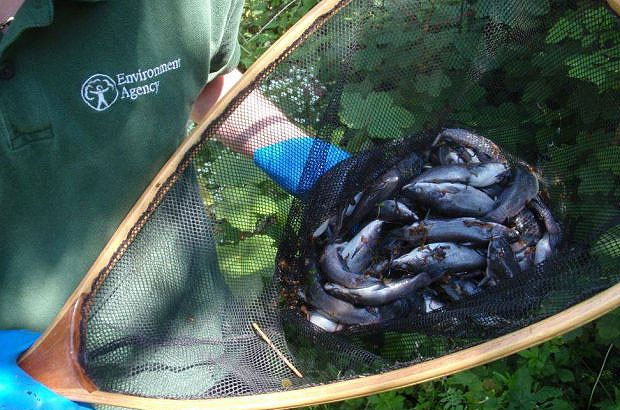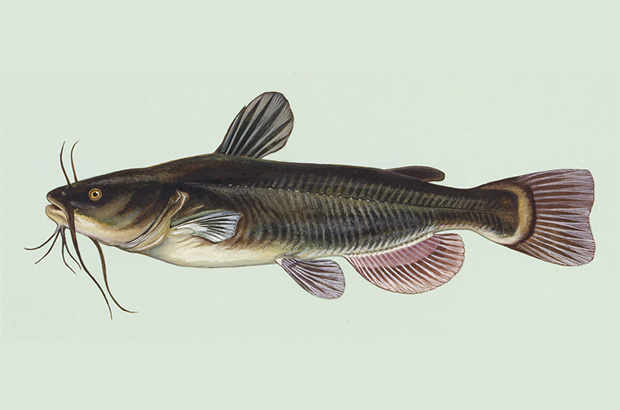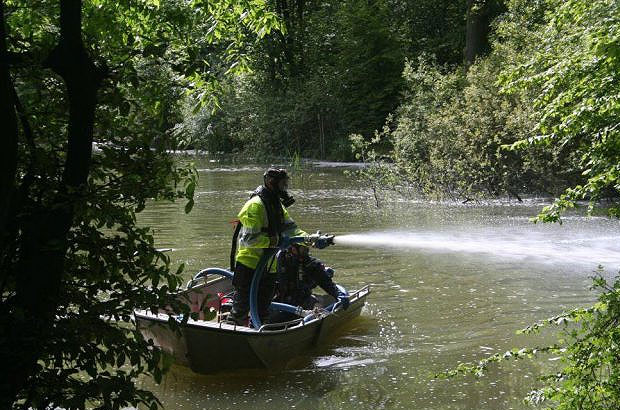
The Environment Agency (EA) National Fisheries Services are leading the way in the UK developing tools and techniques to contain, control and eradicate high risk invasive non-native fish species. As a lead partner in the delivery of the Invasive Species Framework Strategy for Great Britain, the EA is the enforcing authority for the Import of Live Fish Act and we respond to current and new invasive non-native fish threats.
In May 2014, the National Fisheries Services Virtual Non-native Species Management Team, working closely with Hertfordshire and North London area staff delivered a rapid response eradication operation to remove the only known population of the highly invasive black bullhead from a fishery in Essex, England.
Black bullhead and its impact

The black bullhead (Ameiurus melas) originally comes from North America. Outside of their natural range they are highly invasive. This small catfish grows to only 20cm, but reaches huge densities, is very tough, tolerant of poor water quality and able to survive temperatures up to 35°C with low oxygen. It has a very broad diet, including our native fish, guards its eggs, has (as our officers discovered to their cost) vicious, sharp spines in its fins and shoals in balls for added protection from native predators as well as carrying novel parasites and disease.
The fishery in North London had succumbed to this highly efficient invader, and the local angling club had lost one of their best fisheries. The club contacted the EA fisheries department and the operation to remove the catfish was planned. The angling club chairman said:
“the EA fisheries department has been great to work with. Our fishery had declined to such a poor condition; all due to this menacing non-native catfish. They conducted the operation and dosed the chemical treatment in our lake with military precision. As a club we look forward to restocking with native fish and returning our fishery to greatness again”.
Stopping the spread of non-natives

Should the bullhead have spread, the risk to the wider environment was significant; so a piscicide based eradication was carried out by the specialist national virtual team using boat and bank based application systems. Early indications are that the eradication operation has been successful, and the species has been removed as a risk to our native species and habitats, our fisheries and the angling opportunities they provide. Monitoring of the site will continue.
Anglers Mail reader, John Delaney said in a recent article about the operation:
A massive pat on the back to the EA, they have saved a lot of fisheries and fishermen big problems for the foreseeable future.
Responding to invasive species
Rapid operational response to new threats is a vital and effective component in our continued battle to combat invasive species. Cases where an invasive species has been entirely eradicated from the UK are exceptionally rare; and this is the second high risk fish species we have removed through such action. The fathead minnow was eradicated in 2008; and through our wider Waterframework Directive funded eradication programme we are well on the way to removing the threat of topmouth gudgeon from our waters.
To ensure the continued success of this work, we are asking members of the public to report any sightings or reports of invasive fish species to the Environment Agency or via AquaInvaders app.
Further information can be found at the Non Native Species Secretariat.
For updates please sign up to email alerts from this blog, email me or you can follow us on Twitter @CefasGovUK.